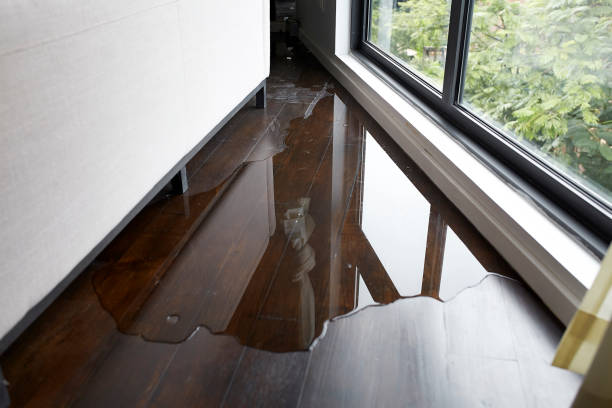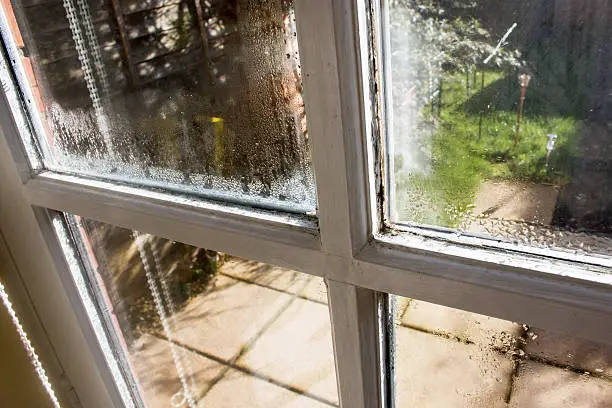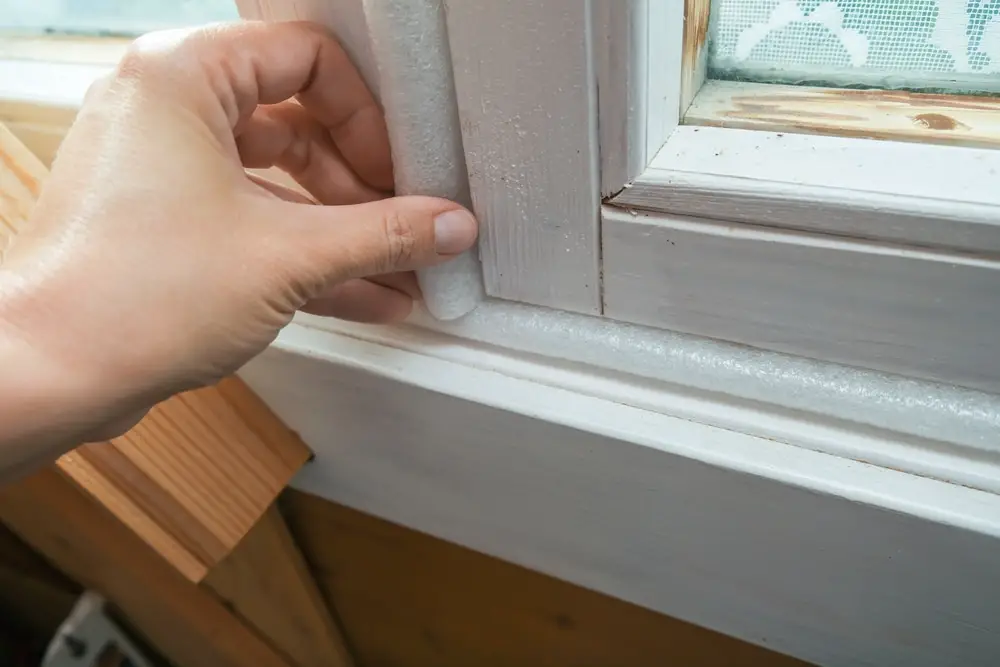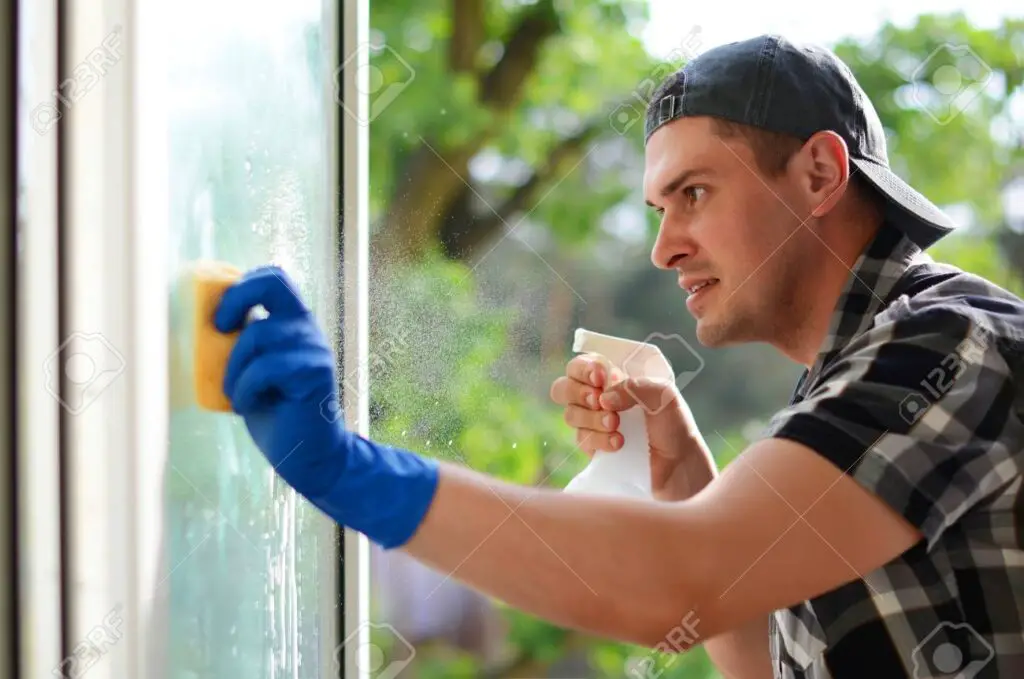Leaking wooden window frames can be a common household issue that often causes concern. These leaks not only lead to an uncomfortable dampness but can also result in long-term damage to your home’s structure.
This article aims to provide practical solutions to mitigate the problem of a leaking wooden window frame, ensuring you can maintain the strength and integrity of your windows for years to come.
Leaking wooden window frames often stems from problems like improper installation, warped wood, or deteriorating sealant. Over time, exposure to harsh weather conditions and fluctuations in temperature may cause the wood to contract and expand, resulting in gaps.
These gaps allow water to seep through, causing leaks. Furthermore, the persistent presence of moisture can lead to mold growth and structural damage, exacerbating the problem.
Causes of Leaking Wooden Window Frames

Poor Installation
Poor installation of wooden window frames is a potential cause of leaks. When not properly fitted, gaps can occur between the window frame and the wall, or even within the frame itself, allowing moisture to infiltrate.
In some cases, the installer may inadvertently leave out essential barriers or drainage systems during the construction process, creating an easy path for water to penetrate the interior.
Moreover, the use of inadequate materials or the absence of a proper sealant can also contribute to the leakage problem.
Aging and Weather Damage
The aging process of wooden window frames tends to make them particularly susceptible to weather damage. Heavy rainfall, severe winds, scorching sunlight, and snow can all take a toll on the integrity of your wooden window frames.
Over time, constant exposure to these elements can cause the wood to warp, crack, and split, creating gaps where water can seep in and cause leaks.
Additionally, the harsh weather conditions might also strip away any protective paint or coating, leaving the bare wood exposed to moisture and initiating rot.
Faulty Seals
Faulty or deteriorated seals are another common cause of leaking in wooden window frames. The sealant or caulk used during the installation process serves as a barrier to prevent moisture from entering the house.
However, over time, this sealant can crack or peel off due to variations in temperature, exposure to sunlight, or just natural deterioration. When this happens, water can infiltrate these cracks, leading to leaks.
Regular inspection of the window seals and timely replacement can prevent water penetration and subsequent damage.
Implications of Leaking Window Frames
Structural Damage

One of the primary implications of leaking window frames is structural damage. Over time, the constant infiltration of water can compromise the structural integrity of not only the window frames but also the surrounding walls and floors.
The moisture can cause the wood to swell and warp, leading to further damage such as cracking or splitting. Furthermore, the water can seep into the interior walls, causing damp patches, peeling paint, and in severe cases, even structural instability.
Therefore, it’s crucial to identify and address leaks promptly to prevent significant structural damage.
Increased Energy Bills
Leaking window frames can also lead to increased energy bills. Leaks or gaps in the window frames can allow both heated and cooled air to escape from your home.
This forces your heating, ventilation, and air conditioning (HVAC) system to work harder to maintain a comfortable indoor temperature, leading to higher energy consumption and, consequently, increased utility bills.
Health Risks
Additionally, leaking window frames pose various health risks. Persistent dampness from leaks can promote the growth of mold and mildew, which can cause or exacerbate respiratory problems, allergies, and other health issues.
Exposure to mold spores can lead to symptoms such as sneezing, coughing, wheezing, and skin irritation, especially in individuals with pre-existing respiratory conditions or allergies.
Identifying Leaks in Wooden Window Frames
Visual Inspection
Visual inspection is a critical first step in identifying leaks in wooden window frames. Start by visually examining the window frame closely for any signs of moisture, discoloration, peeling paint, or visible cracks that could be the potential route for water ingress.
Discoloration of the wood is a common sign of long-standing water exposure while peeling paint can indicate that water has infiltrated the wood underneath.
Another sign to look out for is dampness or frost on the inside of the window, which suggests the presence of a leak. In addition to the window frame itself, also inspect the wall area around the window for signs of water damage, such as staining, mold growth, or peeling wallpaper.
This could be a sign of water seeping through the window frame and into the wall.
Remember, visual inspection may not reveal the exact location of the leak, as water can travel and cause damage far from the leak’s source. Therefore, it’s important to conduct a thorough inspection of the entire window and surrounding areas to identify potential problem areas.
Water Testing
Water testing is a more definitive method for identifying leaks in wooden window frames. This process involves simulating a rainstorm to uncover the exact location where water is breaching the window frame.
Before proceeding, ensure that the interior surrounding the window is protected with drop cloths or plastic sheets to prevent water damage.
To conduct water testing, you’ll need a garden hose with a spray nozzle. Starting at the bottom of the window, lightly spray the window with water and gradually work your way upwards.
It’s important to begin at the lowest point because water may be penetrating the frame at a certain height and then running down the frame, making it appear as though the leak is lower than it is.
Have a second person inside the house observing the window during the test. If water starts to appear on the inside of the window, stop the water test and note the area on the frame where the water seeped through.
This pinpointed leak location will guide your repair efforts.
Remember to conduct the water test with care. Over-pressurizing the water spray could force water into the window and give false results. The aim is to imitate natural rain conditions to identify the natural points of water ingress.
Water testing can provide a clear, accurate location of leaks, offering a roadmap for effective repair and remediation efforts.
Fixing Leaky Wooden Window Frames
Sealing the Leaks

The first step in sealing a leak in a wooden window frame is to thoroughly clean the area. Use a mild detergent and a soft brush to remove any dirt or debris from the leak area. Once the area is clean and dry, you’re ready to begin the sealing process.
You’ll need a high-quality, paintable latex or silicone caulk for this job. These types of caulk are designed to adhere well to wood and are resistant to water, making them perfect for sealing leaks in wooden window frames.
Apply the caulk to the area where the leak was identified during the water test, ensuring that you create a tight seal. Use a caulk smoothing tool or your finger to smooth the caulk into the joint or crack.
Once the caulk is applied, allow it to dry according to the manufacturer’s instructions.
This will usually take anywhere from a few hours to a full day. After it has dried, check the seal by conducting another water test. If no water seeps through, the leak has been successfully sealed.
If the leak is still present, repeat the sealing process. In cases where the leak is due to a larger gap or hole, you may need to use a wood filler or epoxy to repair the window frame before sealing it with caulk.
Remember to repaint the sealed area to match the rest of the window frame once the sealant is completely dry. This not only enhances the appearance but also provides an added layer of protection against future leaks.
Replacing Damaged Wood
When leaks are due to severely damaged or rotten wood, it may be necessary to replace parts of the window frame. Start by evaluating the extent of the damage. If the damage is limited to a small part of the frame, you might be able to remove and replace just that portion.
However, if the damage is extensive, it might be prudent to replace the entire frame.
To start, carefully remove the damaged wood using a pry bar or chisel, taking care not to damage the surrounding areas.
Clean out the area thoroughly, ensuring no remnants of rotted wood remain. Measure the dimensions of the removed piece and cut a new piece of wood to match. It’s advisable to use pressure-treated wood or wood specifically designed for outdoor use, as this will be more resistant to future leaks.
Apply wood glue to the new piece of wood, and fit it into the space left by the removed piece.
Ensure that it fits snugly. Secure it with screws, if necessary, and allow the glue to dry completely according to the manufacturer’s instructions. Once dried, use sandpaper to smoothen any rough edges or protrusions.
Finally, apply a coat of primer to the new wood. This will help seal the wood against moisture and prepare it for painting. Once the primer is dry, paint over the new wood with a color that matches the rest of the window frame.
This not only restores the aesthetic appeal of your window but also provides an additional barrier against leaks.
Professional Repair Services
If the damage to the wooden window frame is beyond your repair capabilities, or you simply don’t have the time for a DIY project, professional repair services are a reliable alternative.
These services are often equipped with experienced personnel and the right tools to handle various window problems, including leaks. They will thoroughly assess the extent of damage, and based on their findings, they’ll ensure a comprehensive repair or replacement of the frame as necessary.
Opting for professional services not only ensures the job is done correctly but also guarantees a long-term solution to your leaking window problem.
It’s always recommended to gather quotes from multiple service providers to ensure you’re getting the best value for your money. Remember, while cost is an important consideration, quality, and durability should not be compromised.
Related Topics:
Preventing Future Leaks
Regular Maintenance

Regular maintenance is crucial for ensuring the longevity of your wooden window frames and preventing leaks. This involves inspecting the frames periodically for any signs of wear and tear, such as cracking or rotting wood. If detected early, these issues can be rectified before they develop into major problems.
Additionally, cleaning your window frames regularly can prevent the buildup of dirt and moisture, which can degrade the wood over time.
Using a soft brush and mild detergent, gently scrub the frames to remove any dirt or grime. Ensure that the frames are completely dry before applying sealant or paint.
Proper Insulation
Proper insulation is another key aspect in preventing leaks in wooden window frames. Over time, the sealing or insulation around your windows can wear down, allowing moisture to seep in and cause damage.
It’s important to check the condition of your insulation regularly and to reapply caulking or weatherstripping as necessary. Weatherstripping materials such as adhesive-backed foam tape can provide a tight seal against air and water leakage.
Insulating windows not only prevents leaks but also improves the energy efficiency of your home by reducing heat loss.
Quality Installation
Lastly, the installation of the window plays a significant role in preventing future leaks. Even the highest quality wooden window frame may not perform effectively if it’s improperly installed.
A quality installation should ensure that the window is level, and properly insulated and that there are no gaps between the window and the frame.
Hiring a professional for the installation can ensure that these details are properly addressed. Moreover, they can also provide valuable advice on the best type of wooden frame to use based on your specific region’s weather conditions.
Conclusion
Leaking wooden window frames can pose numerous problems, from structural damage to increased energy bills and potential health risks. However, with proper maintenance, regular inspection, quality installation, and the use of appropriate sealing and insulating materials, you can effectively deal with this issue.
Whether you choose to tackle the task yourself or hire professionals, it’s crucial to address the problem promptly to save your home from long-term damage.
Leaking wooden window frames are more than a mere inconvenience, with diligent care, they can be kept in prime condition, maintaining the beauty and integrity of your home for years to come.
FAQs
How often should I inspect my wooden window frames for leaks?
Regular inspection every six months is recommended. However, if you live in an area with harsh weather conditions, or if your windows are old, it might be beneficial to check them quarterly. Early detection of leaks can help prevent major damage.
What are some signs that my wooden window frame might be leaking?
Some common signs of a leaking wooden window frame include visible water stains, peeling paint or wallpaper, mold growth, and damp or drafty spots around the window. If you notice any of these signs, it’s important to address the issue promptly to prevent further damage.

2 thoughts on “Wooden Window Frame Leaking: Fixing Leaky Wooden Window Frames”